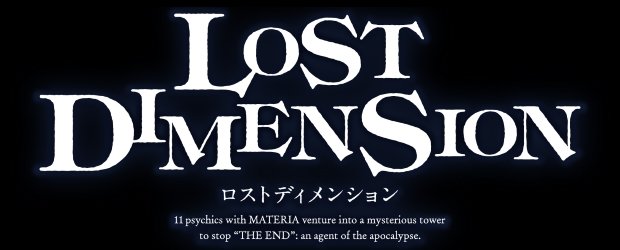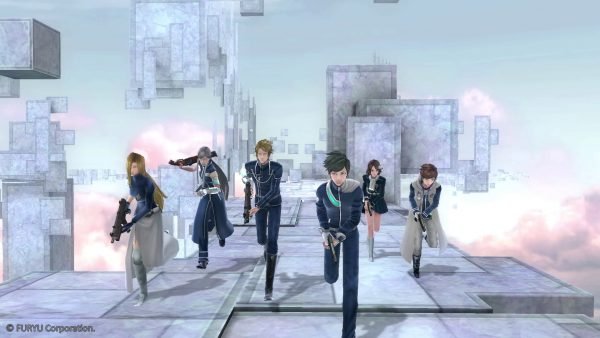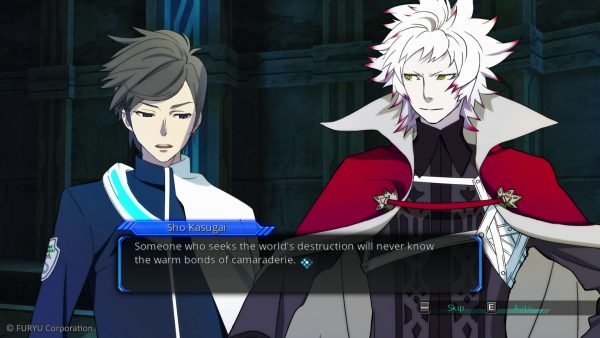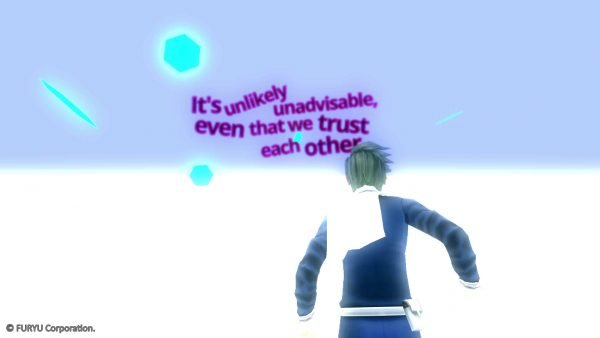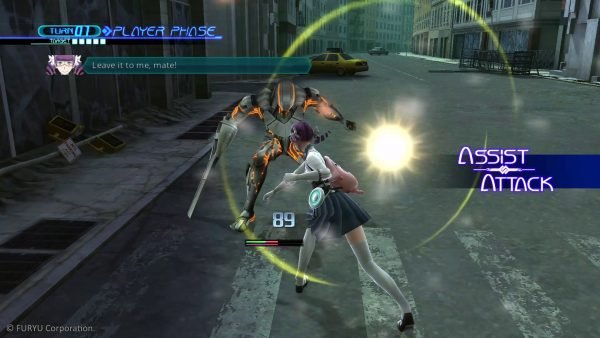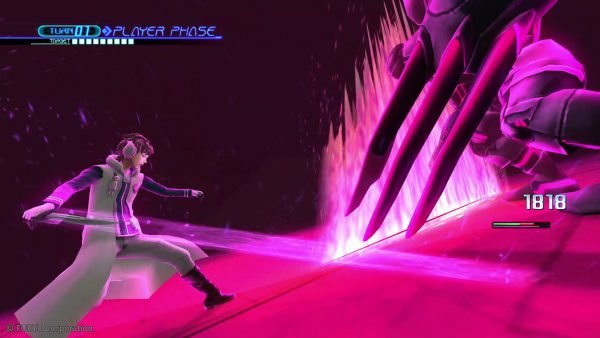Switch to: German
Originally released in 2015 in the west, Lost Dimension is a curious game. Blending turn based strategy with a traitor system that changes up every playthrough, it’s certainly not like other JRPGs. However, Lost Dimension is also an example of how unique ideas are not a game needs to be great.
Lost Dimension wastes no time giving you the setup for its world. A mysterious villain named The End has killed billions of the world’s population, and has promised to end everything in thirteen days. S.E.A.L.E.D., a group of physics, is tasked with infiltrating The End’s tower and killing him. However, the members of S.E.A.L.E.D. soon discover that there are traitors in their midst, and are forced to sacrifice each other in order to climb further up the tower.
The opening premise is interesting, but it quickly becomes apparent that things will never get more interesting. Story events are spread thinly between missions, and talking to the members of S.E.A.L.E.D. does little to help how poorly the game is paced. This is mainly due to the traitor mechanic, which randomises who will betray you on each playthough of the game. The side effect of this system is that non of the characters ever feel too important, and with how short the game is you’ll likely not get attached to many of them.
The traitor mechanic is also a missed opportunity. After every battle Sho will hear up to three suspicious voices and using these you can figure out who the traitor is. Not every suspicious person is a traitor though, so to narrow it down Sho has the Deep Vision ability. Limited to three times per floor, you can use this to check members and see if they really are the traitor. Unfortunately, there is no way to determine the traitor without this mechanic. If traitors acted suspiciously, or there was some other way of discovering them, this mechanic could have been far more interesting.
Further adding to our frustrations with the story is the fact that you can only get the ‘true’ ending after beating the game a minimum of two times. The regular ending feels incredibly rushed, offering little in the way of payoff for those who actually manage to finish the game. Since the cast of characters and story are both fairly uninteresting, we can’t see many players actually making their way back though the game again.
Moving on to the battles themselves, this is where Lost Dimension fails the hardest. Sho heads into battle with five other members, each having their own unique movesets. Each character can move and attack once per turn, while also being able to assist other members’ attacks if nearby. Combat is fairly by-the-numbers, offering little in the way of interesting mechanics. The sanity meter is something unique to Lost Dimension, depleting as characters use their gifts or are attacked. Sanity hitting 0% causes the character to attack at random, friend or foe. All this system really does is limit the amount of abilities you can use in a battle, since most require a decent chunk of sanity.
Battles are enjoyable enough at first, even if they are a little simple. However, Lost Dimension suffers from a noticeable lack of variety. Enemies and environments are reused constantly, and most maps are incredibly small. Adding to this are the incredibly slow enemy movement and attack animations that you’re forced to wait through. An option to speed up enemy turns feels like a strange feature to leave out, especially with how long it can take for some enemies to simply move forward.
We did mention that each member on your team has a unique moveset, but the way you unlock skills is somewhat flawed. Every other level up, or after beating certain missions, characters will gain gift points that are used on their respective skill trees. The skill trees look intimidating at first, until you realise that most of the abilities on them are not worth taking. The meagre amount of gift points that you get during your first playthrough further discourages trying out different abilities and instead just going for the most optimal ones.
Visually Lost Dimension is poor, even taking into account its origins as a PS3/Vita game. Character models lack detail while also having strange faces that rarely resemble the 2D sprites during dialogue. These sprites are the best looking part of the game, but still don’t look quite right due to their animations. Enemies and maps are decent, but again suffer from a lack of detail or variety.
After playing though Lost Dimension for around 10 hours, it’s clear that porting it to PC was not an easy process. The game often has trouble reaching 60 FPS when moving characters, or even just moving between menus. Framerate issues are annoying, especially considering the game’s visuals – Lost Dimension doesn’t even use anti-aliasing or any demanding post-processing effects. This is on top of various bugs including disappearing music and Sho’s sprite after battles.
The port is also lacking in pretty much any graphical customisation options that are usually seen in PC games, aside from resolution and window preferences. Before playing the PC version of Lost Dimension it would be easy to assume that even low end systems could run it well, but the framerate issues make us think otherwise. Keyboard controls can be customised, a welcome addition thanks to the cumbersome default setup. A controller is still the best way to play either way, since moving the camera or going through menus is less than optimal with keyboard and mouse.
Conclusion
Lost Dimension was a big disappointment for us. The unique traitor mechanic seemed like it could lead the game’s story in an interesting direction. However the weak characters, overall story and repetitive battles ruin any chances Lost Dimension had of standing out from other RPGs.



